Abstract
Carbodine, the carbocyclic analog of cytidine, was found to possess significant antiviral activity against influenza virus types A0/PR-8/34 and A2/Aichi/2/68 (Hong Kong) in vitro. The compound selectively inhibited PR-8 influenza virus-induced cytopathogenic effects in Madin-Darby canine kidney and inhibited Hong Kong influenza virus replication in primary rhesus monkey kidney cell cultures. The 50% minimum inhibitory concentration for inhibition of human influenza type A viruses by carbodine was approximately 2.6 microgram/ml (i.e., in the range of antiviral potency of ribavirin, but less potent than amantadine hydrochloride in concomitant assays). The fact that carbodine is metabolized to carbodine triphosphate in mammalian cells makes interference with the viral ribonucleic acid-dependent ribonucleic acid polymerase reaction a likely possibility for its principal mode of action. The carbocyclic analogs of uridine (the deamination product of carbodine), 2'-deoxycytidine, 3'-deoxycytidine, N,N-dimethylcytidine, N-methylcytidine, and some related carbocyclic analogs of pyrimidine nucleosides were inactive against PR-8 influenza virus in vitro. The combination of carbodine plus tetrahydrouridine was no more effective in vitro than carbodine alone, thus indirectly indicating that deamination of carbodine probably did not occur to a significant degree during the cell culture experiments. Although reproducibly active in vitro, carbodine did not exhibit any efficacy against lethal influenza virus infections in mice when administered by either the intraperitoneal or intranasal routes up to dose-limiting toxic levels.
Full text
PDF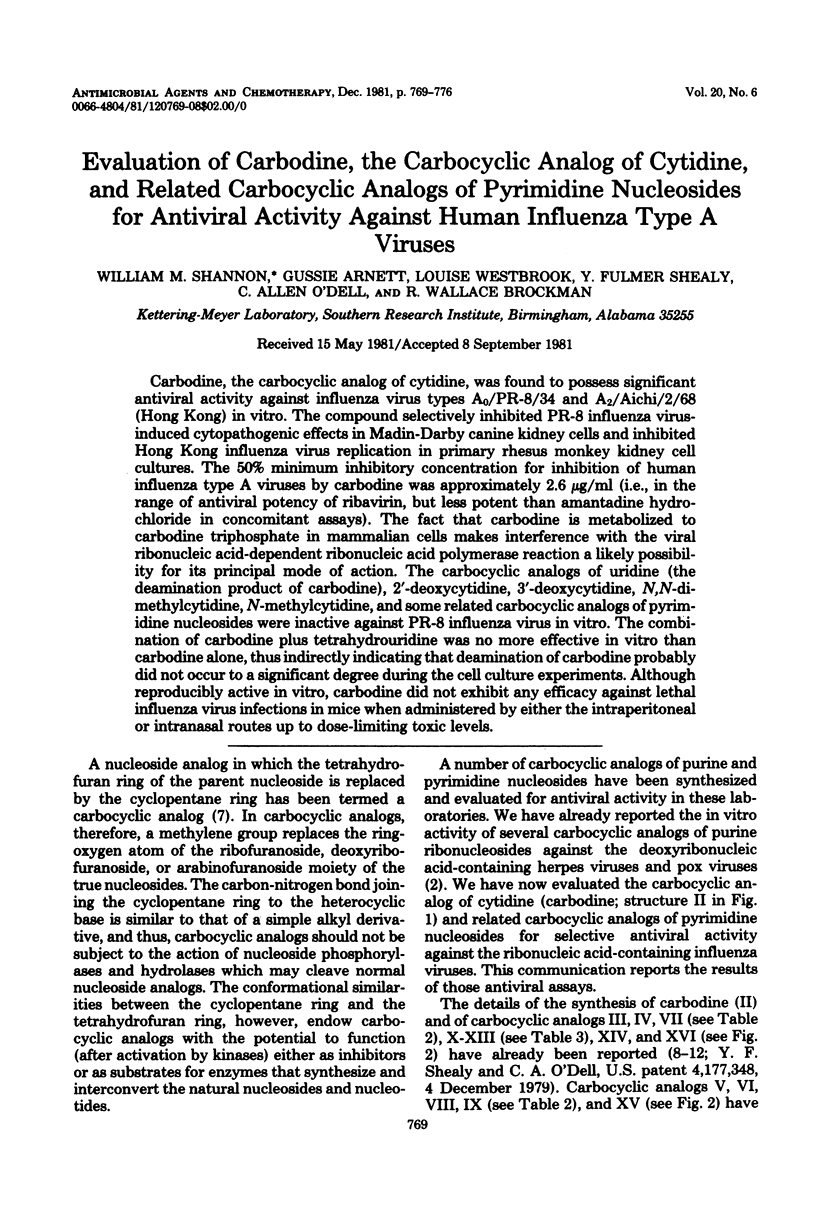

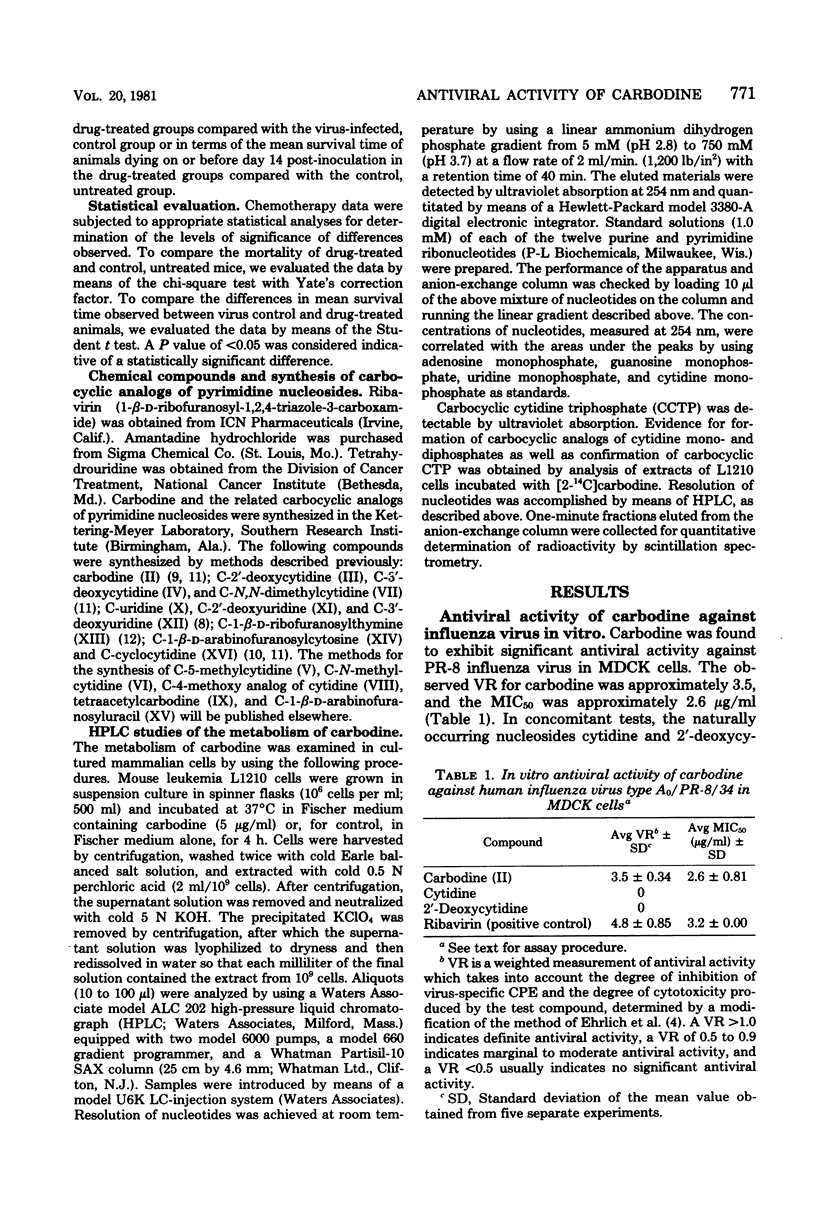

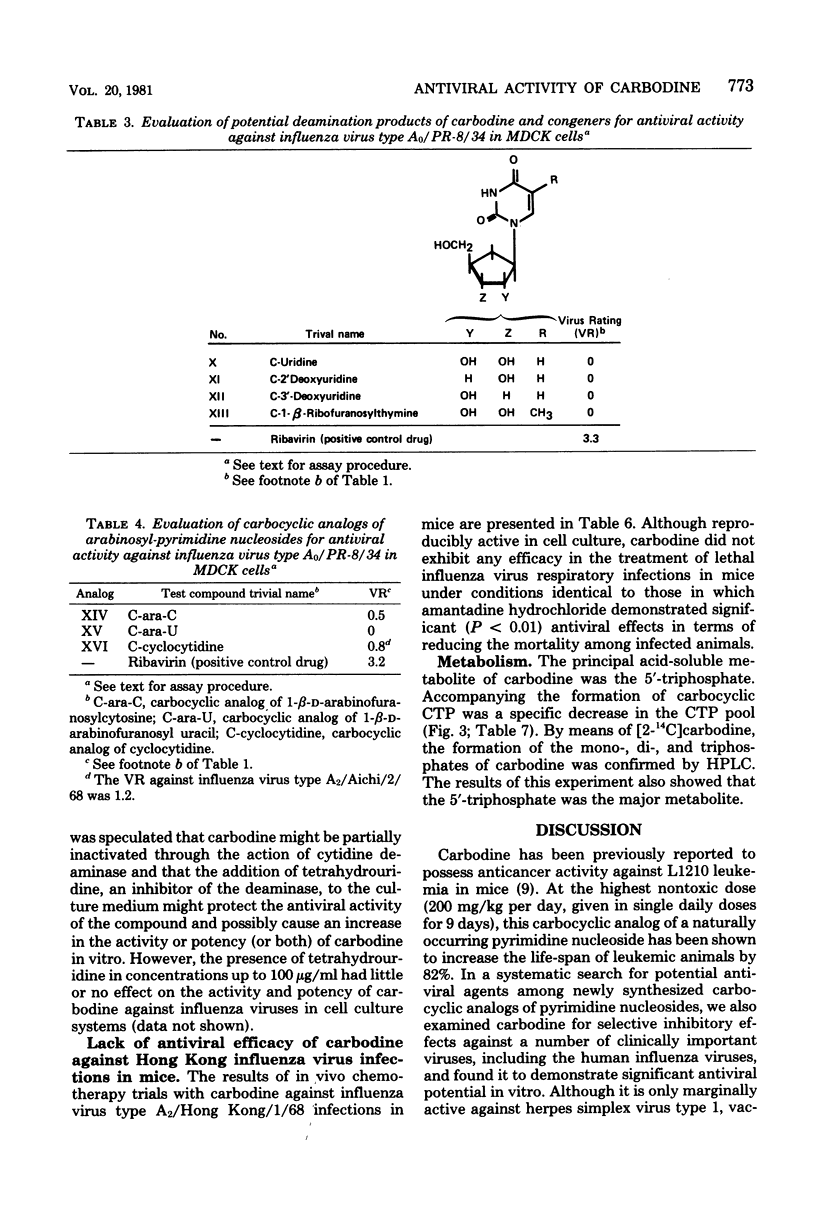
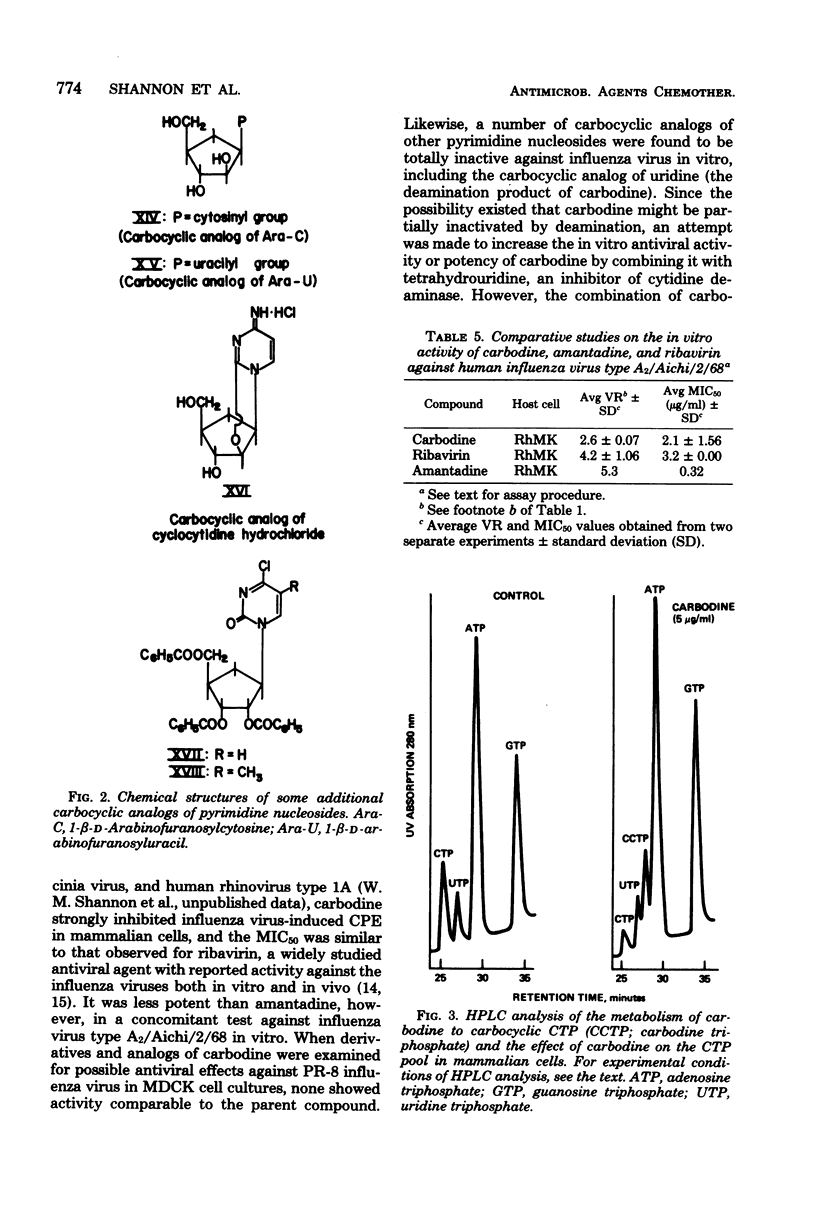
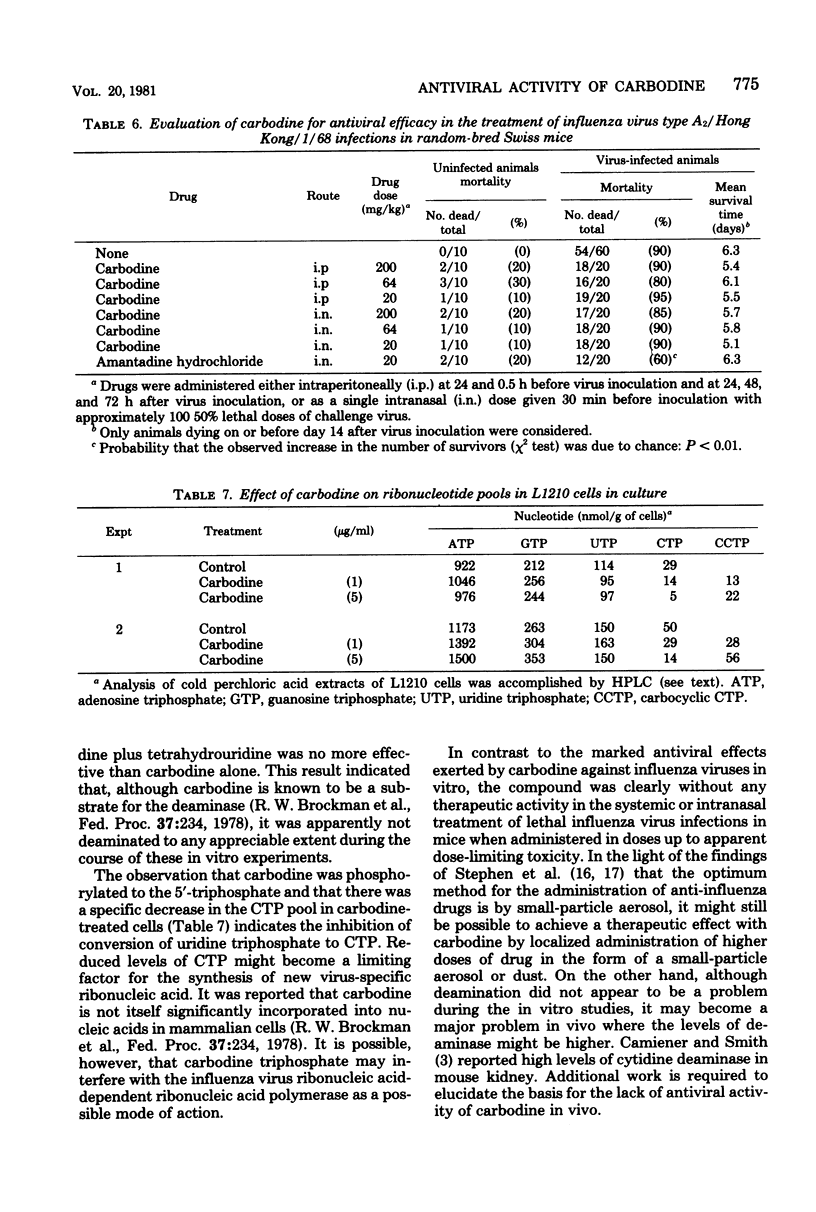
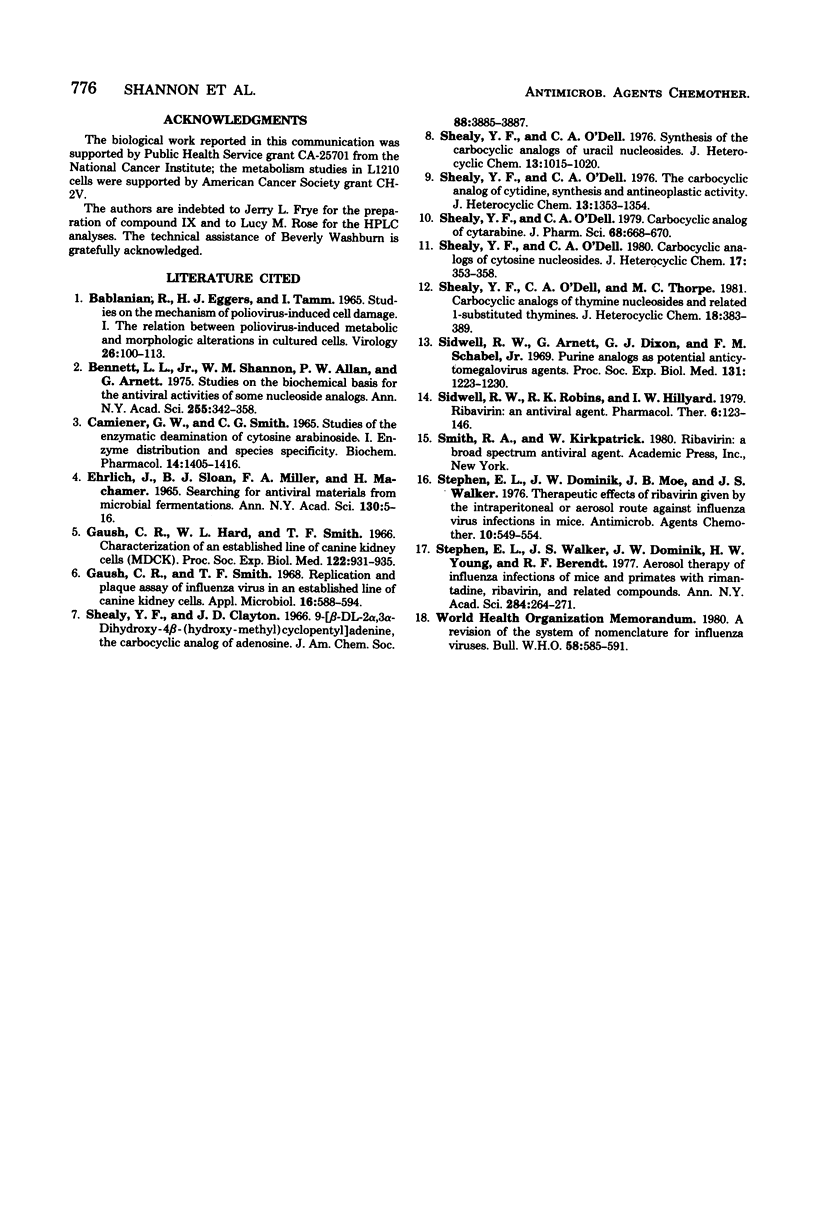
Selected References
These references are in PubMed. This may not be the complete list of references from this article.
- BABLANIAN R., EGGERS H. J., TAMM I. STUDIES ON THE MECHANISM OF POLIOVIRUS-INDUCED CELL DAMAGE. I. THE RELATION BETWEEN POLIOVIRUS,-INDUCED METABOLIC AND MORPHOLOGICAL ALTERATIONS IN CULTURED CELLS. Virology. 1965 May;26:100–113. doi: 10.1016/0042-6822(65)90030-9. [DOI] [PubMed] [Google Scholar]
- Bennett L. L., Jr, Shannon W. M., Allan P. W., Arnett G. Studies on the biochemical basis for the antiviral activities of some nucleoside analogs. Ann N Y Acad Sci. 1975 Aug 8;255:342–358. doi: 10.1111/j.1749-6632.1975.tb29242.x. [DOI] [PubMed] [Google Scholar]
- Camiener G. W., Smith C. G. Studies of the enzymatic deamination of cytosine arabinoside. I. Enzyme distribution and species specificity. Biochem Pharmacol. 1965 Oct;14(10):1405–1416. doi: 10.1016/0006-2952(65)90175-9. [DOI] [PubMed] [Google Scholar]
- Ehrlich J., Sloan B. J., Miller F. A., Machamer H. E. Searching for antiviral materials from microbial fermentations. Ann N Y Acad Sci. 1965 Jul 30;130(1):5–16. doi: 10.1111/j.1749-6632.1965.tb12533.x. [DOI] [PubMed] [Google Scholar]
- Gaush C. R., Hard W. L., Smith T. F. Characterization of an established line of canine kidney cells (MDCK). Proc Soc Exp Biol Med. 1966 Jul;122(3):931–935. doi: 10.3181/00379727-122-31293. [DOI] [PubMed] [Google Scholar]
- Gaush C. R., Smith T. F. Replication and plaque assay of influenza virus in an established line of canine kidney cells. Appl Microbiol. 1968 Apr;16(4):588–594. doi: 10.1128/am.16.4.588-594.1968. [DOI] [PMC free article] [PubMed] [Google Scholar]
- Shealy Y. F., O'Dell C. A. Carbocyclic analog of cytarabine. J Pharm Sci. 1979 May;68(5):668–670. doi: 10.1002/jps.2600680549. [DOI] [PubMed] [Google Scholar]
- Sidwell R. W., Arnett G., Dixon G. J., Schabel F. M., Jr Purine analogs as potential anticytomegalovirus agents. Proc Soc Exp Biol Med. 1969 Sep;131(4):1223–1230. doi: 10.3181/00379727-131-34075. [DOI] [PubMed] [Google Scholar]
- Sidwell R. W., Robins R. K., Hillyard I. W. Ribavirin: an antiviral agent. Pharmacol Ther. 1979;6(1):123–146. doi: 10.1016/0163-7258(79)90058-5. [DOI] [PubMed] [Google Scholar]
- Stephen E. L., Dominik J. W., Moe J. B., Walker J. S. Therapeutic effects of ribavirin given by the intraperitoneal or aerosol route against influenza virus infections in mice. Antimicrob Agents Chemother. 1976 Sep;10(3):549–554. doi: 10.1128/aac.10.3.549. [DOI] [PMC free article] [PubMed] [Google Scholar]
- Stephen E. L., Walker J. S., Dominik J. W., Young H. W., Berendt R. F. Aerosol therapy of influenza infections of mice and primates with rimantadine, ribavirin, and related compounds. Ann N Y Acad Sci. 1977 Mar 4;284:264–271. doi: 10.1111/j.1749-6632.1977.tb21959.x. [DOI] [PubMed] [Google Scholar]


